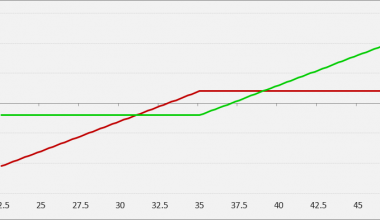As a computing concept, virtualization has been around for more than 60 years. In order to make it easier for mainframe computer-using enterprises to share computing resources, it first arose in the late 1960s. By granting various sub-systems access to the mainframe’s resources, it was intended to make the most of its computing capacity. Read below For a further overview of what virtualization networking is, its types, and how virtualization server works.
What Is Virtualization
Processors, memory, storage, and other hardware components of a single computer can be separated into several virtual computers, also known as virtual machines, using virtualization, which employs software to construct an abstraction layer over computer hardware (VMs).
Although while only a piece of the real underlying computer hardware is being used by each VM, each one runs its own operating system (OS) and functions like a separate machine.
A common approach in modern company IT design is cloud computing. Economical aspects of cloud computing are also driven by this technology. Using their current physical computer hardware to provide cloud services to users is made possible through virtual machines;
Benefits of Virtualization
Data center managers and service providers benefits from virtualization in a number of ways:
- Resource effectiveness: Prior to cloud computing, each application server required a separate physical CPU; IT workers would have to buy and set up a new server for each program they intended to run.
- It is simpler to utilize and maintain software-written policies when software-defined virtual machines (VMs) take the place of real computers. Making use of this, you can automate workflows for IT service management.
- Low downtime: System and application crashes can interrupt user productivity and result in downtime. Administrators can coexist with several redundant virtual machines and switch between them when issues emerge.
- Provisioning more quickly: Each application’s hardware must be purchased, installed, and configured individually. Provisioning virtual machines to run all of your applications is much faster when the necessary hardware is already in place.
Types of Virtualization
#1. Desktop Virtualization
On the same computer, you can run various desktop operating systems, each in its own virtual machine (VM). Desktop virtualization comes in two flavors:
- When a thin client user logs in, the virtual desktop infrastructure (VDI) streams many desktops from VMs on a central server. VDI lets an enterprise provide users with many OSes without installing them on devices.
- The usage of local desktop virtual machines allows a user to run one or more extra operating systems on a local computer and switch between them as needed without altering the primary OS in any way.
#2. Network Virtualization
With the help of software, a network administrator can control the entire network from a single console by using a “view” of the network created via network virtual machines. It turns hardware functions and elements—such as connections, switches, and routers—into software that runs on a hypervisor.
#3. Storage Virtualization
The Storage virtualization allows all of the network’s storage units, whether on servers or standalone storage units, to be accessed as a single device. Storage virtualization consolidates all storage blocks into a shared pool that may be redistributed to any network virtual machine (VM).
#4. Data Virtualization
In today’s businesses, storing data is in a variety of places, including the cloud and on-premise hardware and software systems, utilizing a variety of file types and applications.
#5. Application Virtualization
Application virtualization allows for the running of applications without having to explicitly install them on the user’s OS. The OS on the end user’s device continues to function normally, in contrast to complete desktop virtual machines (discussed above), which is what this is.
#6. CPU Virtualization
CPU (central processing unit) (central processing unit) Hypervisors, virtual computers, and operating systems are all made feasible by the underlying concept known as cloud computing. It enables the partitioning of a physical CPU into numerous virtual CPUs for usage by various virtual machines (VMs).
#7. GPU Virtualization
A GPU (graphics processing unit) is a specialized multi-core processor that boosts computing performance by handling demanding graphic or mathematical computations. GPU virtual machines enable numerous machines (VMs) to utilize all or a portion of a single GPU’s processing capacity for faster video, artificial intelligence (AI), and other graphic or computationally demanding activities.
#8. Cloud Virtualization
The virtualization is necessary for the cloud computing model, as was already mentioned. Cloud computing providers can give consumers access to a variety of services by virtualizing servers, storage, and other physical data center resources.
What Is Virtualization Server
Through the use of software, server virtualization divides a physical server into a number of separate and isolated virtual servers. An independent operating system can be run on each virtual server.
Benefits of Server Virtualization
The advantages of cloud computing for businesses are numerous. The advantages of server virtualization go beyond simplifying network requirements.
- Conserving Space: If you only run one process or program per server, they will quickly take over your data center. You might be able to save a lot of physical space by hosting several virtual servers on fewer physical servers.
- Cost-cutting for hardware: Putting together physical servers can be expensive. The cost to deploy virtual servers is significantly lower.
- Improving resource efficiency: Many servers are more powerful than necessary for their jobs, therefore corporations are paying for raw resources. Virtual machines boost efficiency.
- Lower Energy Costs: cloud computing lets you use server resources efficiently instead of investing in useless infrastructure, reducing the number of servers that use energy.
- Lessening of IT Demand: Keeping up a big physical server network might be difficult for an organization’s IT department. By freeing up resources, virtual machines can enable IT staff to focus on other business requirements.
Drawbacks of Server Virtualization
Server virtualization is not flawless in every way. Virtual machines have a few drawbacks, such as:
- Raising Upfront Costs: The cost of any new gear as well as licensing fees may increase initial outlay.
- Reduction of performance: Customers may notice a slight drop in performance as a result of resource sharing, especially when using virtual machines that makes use of a hypervisor.
- Server Sprawl: VM sprawl occurs when administrators accidentally overbuild the network due to how simple it is to create virtual machines (VMs).
Three Kinds of Server Virtualization
#1. full virtualization
The CPU and disk space of a physical server are immediately accessible through a hypervisor, a type of software used for full cloud computing. Each virtual server is kept separate from the others by the hypervisor, which also keeps an eye on the physical server’s resources.
#2. Para-Virtualization:
In contrast to full cloud computing, para-virtualization entails the network as a whole operating as a single coherent system. Para-virtualization allows operating systems to be managed by the hypervisor with less processing power because each operating system on the virtual servers is aware of the others.
#3. OS-Level Virtualization:
Unlike full and para-virtualization, OS-level visualization does not make use of a hypervisor. Instead, the actual server’s operating system’s virtualization capabilities handles all of a hypervisor’s functions. With this server technique, every virtual server must, however, use the same operating system.
Why Server Virtualization?
Web hosting services can be provided at a low cost and existing IT infrastructure resources can be utilized well using server virtual machines. Servers use a small portion of their computing power when operating without server virtualization.
Server virtualization makes it possible for each virtual server to function as a different physical device by splitting up each physical server into many virtual servers. Application and operating system independence is possible on each virtual server. Each virtual server becomes a physical server in this process, increasing the capacity of each physical system while increasing resource consumption.
What Is Virtualization Networking
Network resource abstraction, often known as network virtualization (NV), is the process of moving network resources from hardware to software. A physical network can be split into numerous independent virtual networks or combined with other physical networks to create a single virtual, software-based network using NV.
Network managers can migrate virtual computers between domains with the help of network virtual machine software without having to change the network’s configuration. In order to execute different virtual network layers on top of the same physical network fabric, the software builds a network overlay.
Why Virtualization Networking?
From the periphery to the cloud to the software-defined data center (SDDC), network virtualization is changing the rules for how services are delivered. With this method, networks become dynamic, adaptable, and optimized rather than static, rigid, and ineffective. Forget about spending days or weeks setting up the infrastructure to support a new application. Network virtualization can do it for you. In order to achieve a quick time to value, apps can be upgraded or deployed in minutes.
How does network virtualization work?
Network virtualization decouples network services from hardware and allows virtual network provisioning. It uses the physical network as the packet-forwarding backplane and offers software-based network construction, configuration, and monitoring.
Network and security services are delivered to data center hypervisors and “connected” to specific workloads, such as your virtual machines (VMs) or containers, based on each linked application’s networking and security requirements. Security and network services transmit workloads.
Advantages of network virtualization
By automating and streamlining a number of the procedures involved in maintaining a data center network and controlling networking and security in the cloud, network cloud computing aids enterprises in achieving significant improvements in speed, agility, and security. One or more of the main advantages of networking virtualization are listed below:
- Network provisioning should take place in minutes rather than weeks.
- Increase operational effectiveness by automating manual tasks
- Independent of physical topology, position and move workloads
- Networking cloud computing help boost the data center’s network security
What Is the Main Purpose of Virtualization?
The main purpose of visualization is that virtualization relies on software to imitate hardware operations and build a virtual computer system. This makes it possible for IT companies to operate several virtual systems, as well as numerous operating systems and applications, on a single server. Scale economies and increased effectiveness are two advantages that result.
Why Is Virtualization Used?
Virtualization may significantly reduce costs while enhancing IT agility, flexibility, and scalability. The benefits of cloud computing include higher workload mobility, improved performance and resource availability, automated operations, and lower ownership and operating costs for IT.
Conclusion
With this tutorial, we have learned how important infrastructure management is to managing and the efficient operation of a company. One of the primary technologies that boost the effectiveness of the organization’s networking system by utilizing its many elements is virtualization. Both time and energy are saved by doing this. Moreover, the services will operate more quickly, and virtual in conjunction with cloud computing can provision and offer a variety of on-demand customer applications.
Related Articles
- VIRTUALIZATION SOLUTIONS: Free Tips You Need to Know in 2023
- CLOUD COMPUTING: Definition, Types, Pros, Cons & PDF (Detailed 2023 Guide)
- WEB HOSTING SERVICES: 23 Best Hosting Services of 2023
- IVR: (Interactive Voice Response) What Is It, Services & Benefits






